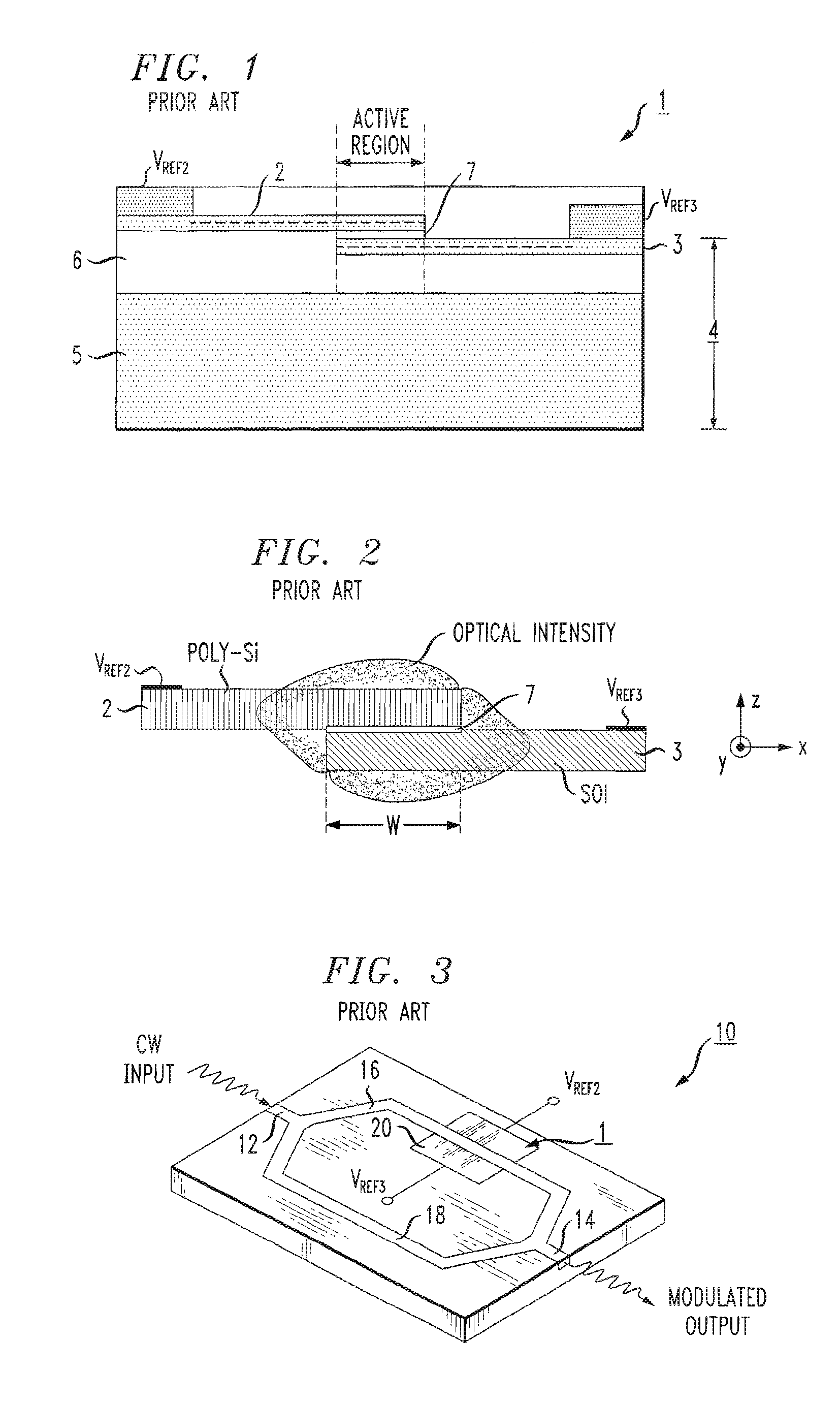Optical Modulators With Controllable Chirp
a technology of optical modulators and chirps, applied in the field of optical modulators, can solve the problems of silicon-based optical modulators in general, lithium niobate-based optical devices have inherent performance limitations, and the use of lithium niobate-based devices in such a situation is not an option, and achieves the effect of small capacitance load
- Summary
- Abstract
- Description
- Claims
- Application Information
AI Technical Summary
Benefits of technology
Problems solved by technology
Method used
Image
Examples
Embodiment Construction
[0037]FIG. 7 illustrates an exemplary chirp controlled optical modulator 30 formed in accordance with the present invention. For the purposes of discussion, the components of modulator 30 that are similar to components of prior art modulator 10 carry the same reference numerals and their functionality is not discussed in detail. In this particular embodiment of the present invention, a phase modulation control section 32 is included in modulator 30 and is located “inside” the modulator with RF data modulation section 34 (which functions in the manner of the prior art as described above to impress an electrical modulating input signal on a CW optical signal propagating through the structure). In the embodiment of FIG. 7, a separate DC bias section 36 is also shown. The use of DC bias in a modulator is well-known in the art, and is used to ensure that the modulator provides the desired phase shift around a specific operating point. The DC operating point is shown on FIG. 5 as preferab...
PUM
| Property | Measurement | Unit |
|---|---|---|
| conductivity type | aaaaa | aaaaa |
| length | aaaaa | aaaaa |
| phase | aaaaa | aaaaa |
Abstract
Description
Claims
Application Information
 Login to View More
Login to View More - R&D
- Intellectual Property
- Life Sciences
- Materials
- Tech Scout
- Unparalleled Data Quality
- Higher Quality Content
- 60% Fewer Hallucinations
Browse by: Latest US Patents, China's latest patents, Technical Efficacy Thesaurus, Application Domain, Technology Topic, Popular Technical Reports.
© 2025 PatSnap. All rights reserved.Legal|Privacy policy|Modern Slavery Act Transparency Statement|Sitemap|About US| Contact US: help@patsnap.com



